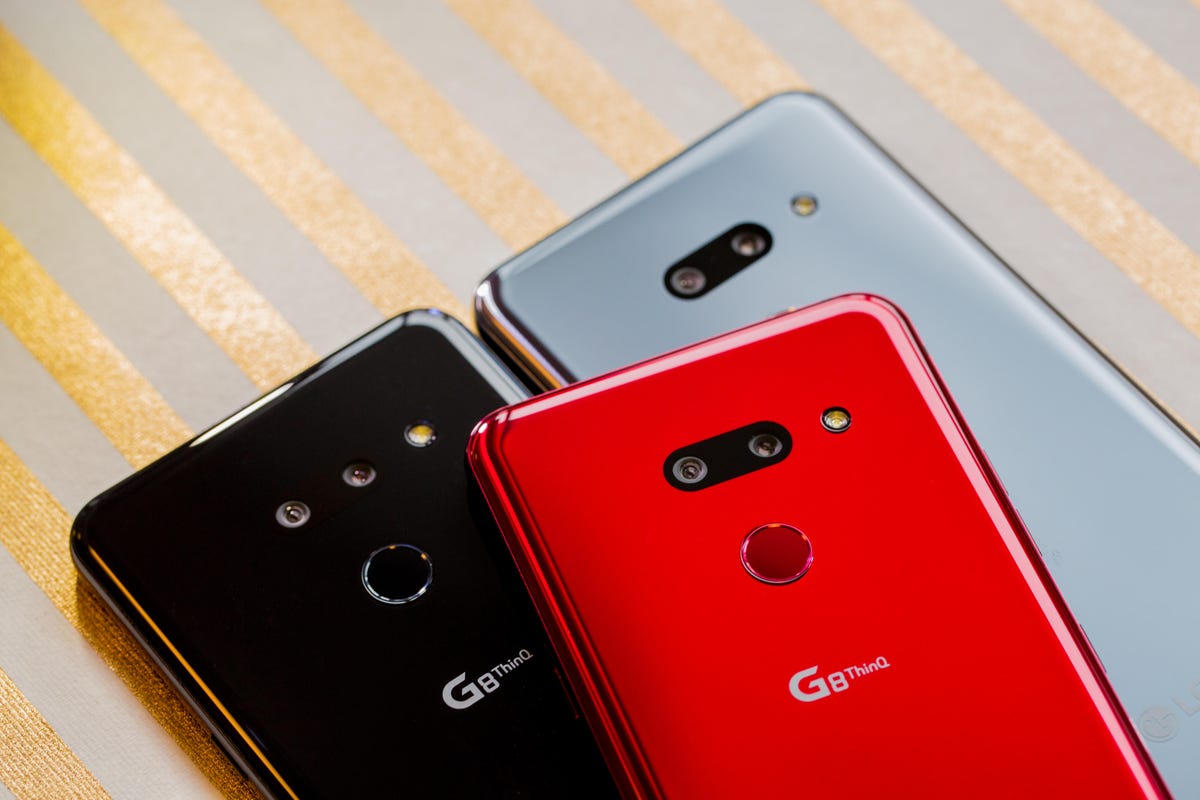
The LG G8 is the follow-up to last year's G7 ThinQ and serves as LG's latest flagship phone. Available April 11 for $820-$850 depending on the carrier, it's one of the premium Android phones gunning against Samsung's Galaxy S10 line. (UK and Australian prices have yet to be announced.)
For more info, read CNET's full LG G8 ThinQ review.
Originally published Feb. 24.
Update, April 9: Updated with more information for the full review.
Like the G7 (left), the G8 has a 6.1-inch display, a water-resistant design, wireless charging and expandable storage up to 2 terabytes.
The G8 has a sharp display, with a 1,440-pixel resolution and a 564 pixel-per-inch density. It measures 5.98 by 2.83 by 0.33 inches (152 by 72 by 8.4 millimeters) and weighs 5.96 ounces (167 grams).
The G8 runs Google's Android 9.0 Pie operating system.
The device is powered by a 3,500-mAh battery and runs on a 2.84GHz octacore Snapdragon 855 chipset.
Below the volume rocker is a third button that launches Google Assistant.
A look at the G8's side.
The phone's antenna band.
The G8 is a rare headphone-jack holdout. It has a USB Type-C port for charging and file transfers.
Another look at the bottom of the G8.
Overall, the LG G8 looks very similar to the G7.
On the back is a fingerprint reader.
On the front is an 8-megapixel camera, which LG calls a Z Camera, which has an IR sensor and transmitter for 3D-mapping and motion-captioning purposes.
You can set the G8 to unlock after scanning the veins in your hand. LG calls this new biometric authentication Hand ID.
The phone's IR sensor gathers information from the hemoglobin in your blood, and renders a unique image of your veins inside your hand. Hovering your hand over the camera, you won't need to touch your phone at all to unlock it.
Hand ID builds into another feature called Air Motion. Because the phone's front camera can track and read your hand movements, you can interface with the phone in a whole new, touchless way.
By pinching your fingers and thumbs together (as if making a bird's beak with your hand and pointing it downward over the phone's camera), you can swipe left and right to launch certain apps, pause or play media and even adjust the volume by miming a twist of a jog dial.
Hand ID doesn't work as fast as the face unlock or the fingerprint scanner (which you can also use on the back of the phone), but the idea is pretty cool -- especially if you're in the middle of a task or you just don't want to pick up your phone.
Just be aware that when you use Air Motion, it looks very, very awkward.
On the back are two cameras, with 12- and 16-megapixel sensors.
Another look at the phone's rear cameras.
A super close look at the flash.
LG added bokeh video recording that mimics the depth-of-field effect of a full-frame camera. For those who love the blurry background effect for still portraits, this lends the same artsy and dramatic look to videos.
Like previous high-end LG phones, the secondary rear camera is a wide-angle lens.
Another close look at the G8's rear camera setup.
LG also tweaked the G8's audio. There's no in-ear receiver on the top of the phone anymore.
Instead, sound vibrates throughout the display, which generates the audio you hear.
Click or swipe through for more photos of the LG G8.
In the US, the phone is available across all four major carriers and costs $820 to $850. It will be available April 11.
For more info, read CNET's LG G8 ThinQ review.

